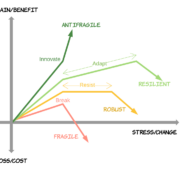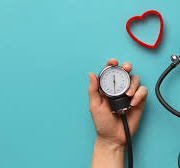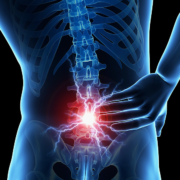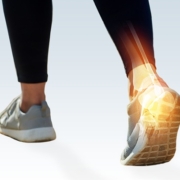Why Exercise?
Understanding the “Why” behind Movement & Exercise
How do our mindset and beliefs around exercise affect the decisions we make? This blog explores the nitty-gritty of the “why” movement and exercise are beneficial to you in order to help you make the change you are seeking.
As Physiotherapists, one part of our job is to provide evidence-based education to our patients about the importance of movement and exercise. Movement can be active (something you do) or passive (something that is done to you such as joint mobilisation or muscle/nerve/fascia release as common examples).
Saanich Physiotherapy and Sports Clinic prides itself in providing a holistic approach to your health & wellbeing. Movement and exercise are but one part of that approach.
We are each of us unique. We come with complexities and intricacies that make us who we are. In order to delve deeper to understand the “why”, it is important to highlight that all injuries are not the same, even if they are the same injury. Equally so, all pain is not the same, despite the pain seeming to originate from a particular region. Confused? It’s ok, it’s a little bit complex, but I promise to break it down for you so it’s easy to digest. No-one likes pain and our brains are wired to take short cut’s. It’s part of being human. We all want a quick fix. We don’t have time for this pain or injury. It’s stressing us out. Sometimes a quick fix can work to provide some temporary relief, and that’s ok. However, there is usually more to the story and so I will tell you about what we’ve learnt from the many 1000’s of patients we have had the pleasure of helping by getting to know their stories around exercise and movement.
If you’ve tried quick fixes and you haven’t solved the issue your internal voice may speak up and tell you to “do exercises to fix the issue”. That seems logical. Then you probably google it.
Movement and exercise to fix an issue
If logic has taken you on a bypass route straight to a Dr Google search or an Instagram video providing a generic or formulaic approach to exercise as a “fix”, the bypass route will not provide all the answers you need and may even steer you in the wrong direction. There is nothing wrong with information however, which information is critical. Which exercises? When to do them? How many to do? How often to do? When to increase? When to decrease? When to change? What if I get worse? Do I persist? Do I modify? How should I modify?
These and many more questions will not be answered by trying to skip the longer scenic route with your physiotherapist as your co-driver and guide to improving your skill. Heading straight to the bypass route either solo or with only partial information that applies to you specifically will often lead to an aggravation of your pain and a delay in the healing process.
Please don’t stop reading here as there is so much more to share with you. Your Physiotherapists job is to know people and people are like complex ecosystems. Bodies – brains, hormones, muscles, bones, tendons, ligaments, nerves, fascia, neural networks, chemicals transmitting signals everywhere, emotions, expectations, histories, unconscious and conscious biases and everything that makes you tick, it’s all interacting with your environment, with other people, constantly re-evaluating. How amazing is that? People are awesome. You are awesome and that is why you need a multifaceted and complex problem-solving approach to your treatment. That is what we do. There are no exceptions. None of us can say we are exempt, we don’t get to opt-out, as we are all made up of the same pieces, it’s just that our jigsaw puzzle, once completed, like our neural networks and their interconnectedness, looks different to anyone else’s. And that is the beauty of people and everything each of us brings with us.
Mindset and Beliefs
Before we look at the “why” exercise is important, it is imperative to understand the mindset and beliefs we each carry within us in relation to movement and exercise. Simply hearing the word “exercise” can invoke a range of varying emotions and responses in each of us. These responses are based on our subconscious and conscious biases, our way of thinking, our past and recent experiences.
We all know exercise is supposed to be good for us – but “knowing” is simply often not enough to make the leap to effect a change in our behaviour, specifically around learning and developing new patterns of behaviour. In order to learn and lay down new habits, we must “do”, we need to act and we must “repeat”. Another vital link to laying down new patterns of behaviour is attributing a positive meaning to our new “doing”, in this case, exercise. Here we explore a range of common responses to exercise prescription or even the thought of doing exercises and the likely mindset linked to each.
This could be anything from:
*a closed mindset response – I am not doing that
*a negative mindset response- I don’t want to do that
*a stress response – I don’t have time
*a fear response – I can’t do that
*an avoidance response – that doesn’t apply to me
*an unsure response – I didn’t know that could help
*an angry response – I don’t want exercises. I just want someone to fix me
*a curious mindset response– how will that help me, can you tell me more so I can understand?
*an open mindset response – I will do my best to execute that
*an eager response – what can I do to help myself
*an overeager response – If I just do a lot of these this should fix my issue
*an honest response – I may not have the time, nor energy, but I understand that this can help me so I’ll give it a try
* a mindful response I will tell myself I’ve done a good job when I do my exercises, even if it’s not as often as it could be, I am doing the best I can at this moment.
*a non-judgemental response – I will not tell myself off if I don’t do my exercises as this is not helpful to me learning new patterns of movement and exercises.
Exercise prescription – Finally the nitty-gritty of why exercise and movement are good for us
Exercise prescription can be given for a range of reasons too. The majority of the physiotherapy patient population are prescribed exercises for improving the functionality of a muscle – it may be weak, lacking endurance capacity or overactive and tight. A muscle can also be slow at responding to input from our immediate surroundings which can affect our sense of balance and lead to issues such as falling over.
However, exercise can be given for other reasons too, such as pain modulation, down-regulating an overactive and sensitized nervous system, improvement in bone density, decreasing stress hormones (ie cortisol ) and substance p ( a neurotransmitter & neuromodulating chemical responsible for providing information back to our central nervous system about pain sensations in the body), to minimise and manage the inflammatory chemical response to acute injury or chronic stress on the immune system ( there are many inflammatory mediating chemicals that are produced inside our bodies such as histamines, prostaglandins and bradykinin – this one increases the bodies sensitivity to pain).
Exercise and diet may also assist in the management of overproduction of pro-inflammatory hormones (such as insulin and eicosanoids). An overproduction of these hormones can lead to chronic hyperactivity of our immune system and the development of immune system disorders (including but not limited to rheumatoid arthritis, Crohns’s disease, asthma, ulcers, cancer, atherosclerosis {heart disease}, sinusitis and more ).
Exercise decreases the levels of TNF (tumour necrosis factor) and CRP (C-reactive protein), which are both involved in systemic inflammation. In order to maximise the benefits of exercise and avoid chronic inflammation, we need to ensure we allow sufficient time for your body to recover after each strenuous exercise session.
Foods that increase the inflammatory response in our body are sugars, refined carbohydrates, saturated fats, trans fats, omega 6 fatty acids, MSG, gluten and casein (arthritis.org ).
Exercise can help us to get to sleep (when we get into a regular morning exercise routine our brain produces a sleep chemical called melatonin and exercise also stimulate the brain to produce a chemical called adenosine which makes us feel sleepy). Your circadian rhythm (your natural sleep/wake cycle) is maintained with regular exercise and therefore your sleep patterns are maintained consistently. This is very important in the management of pain and mental health stability.
Exercise regulates our mental health by reducing the body’s arousal, anxiety and depressive symptoms (after exercise our brain produces endorphins, dopamine, norepinephrine, and serotonin and these chemicals make us feel happy and improves our sense of wellbeing ).
Exercise helps our brains remain engaged. As we age, our brain needs to keep learning new things to keep it active and exercise can play a major role in keeping neural circuits in our brain open or creating new neural circuits. By engaging in exercise, we effectively slow down the process of ageing. Working on proprioception, which is your brains understanding of where you are in the world, you can improve your balance reactions, allowing you to do more for yourself and prevent falls.
So that is my condensed version of the nitty-gritty of why exercise is good for us. For me, I enjoyed sharing with you my passion for moving and I hope you learned a few new things too; and now both you, who has most likely sat for a length of time to read this article and me, as I have sat for a lengthier time to write this article, need to get up and move.










